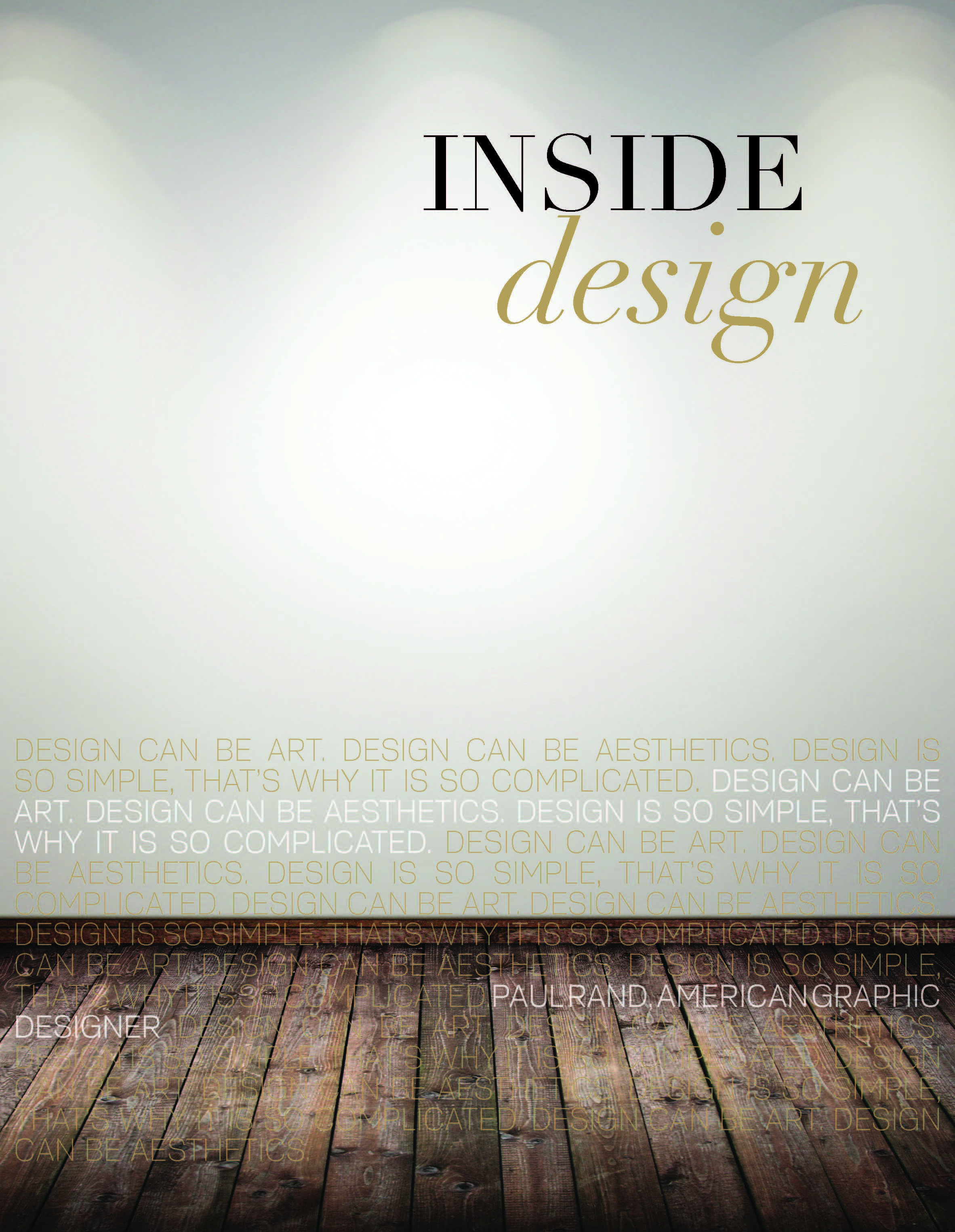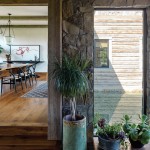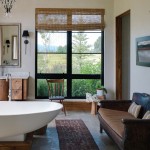“DESIGN IS THINKING MADE VISUAL.” -SAUL BASS
Designers are, at heart, born tinkerers and interior designers tinker with space. They think of living and working spaces as opportunities to elevate our experiences. And the result of this work is their thinking mapped out in a room or in a home or a commercial building. But designers don’t do their tinkering or thinking in a vacuum. The final iteration of a project is the result of collaboration with clients, contractors, and architects; it’s the result of curious and engaged minds that are open to influence and ideas. Great designers have the ability to take all that and turn it into something that seems effortless, natural, and inspiring. The designers WHJ profiles here are committed to finding the most efficient and creative solutions to the space opportunities presented—the final result reflecting their clients and the way their clients live.
THE TALENT
BRIAN GOFF
BRIAN GOFF INTERIOR DESIGN
 After 20 years as a professional in the design industry, Goff started a studio of his own in 2008. A longtime Jackson-area resident, Goff understands every aspect of the construction process and can work with clients on everything from the big-picture floor plans to the minute details of choosing silverware for the table—everything from concept to punctuation. With clients from all over the country, Goff enjoys working with his Jackson clients because, “The casual lifestyle leads to clients who want homes that are functional and beautiful, but with a real emphasis on the practical over the glitzy.” In his practice, Goff is committed to creating spaces that leave nothing to waste and nothing to chance. “We work hard to make the best use of space and ensure that no room is unused. The final iteration of the project must reflect the clients and how they live in the space.” In addition, Goff says, “Jackson clients keep us on our toes because the styles are ever-evolving.”
After 20 years as a professional in the design industry, Goff started a studio of his own in 2008. A longtime Jackson-area resident, Goff understands every aspect of the construction process and can work with clients on everything from the big-picture floor plans to the minute details of choosing silverware for the table—everything from concept to punctuation. With clients from all over the country, Goff enjoys working with his Jackson clients because, “The casual lifestyle leads to clients who want homes that are functional and beautiful, but with a real emphasis on the practical over the glitzy.” In his practice, Goff is committed to creating spaces that leave nothing to waste and nothing to chance. “We work hard to make the best use of space and ensure that no room is unused. The final iteration of the project must reflect the clients and how they live in the space.” In addition, Goff says, “Jackson clients keep us on our toes because the styles are ever-evolving.”
With a particular penchant for fabrics, Goff capitalizes on the colors, moods, and textures that fabrics add to a room—a way to create absolutely distinctive designs, completely reflective of the client and their ambitions for their home. But Goff is careful to stay away from trends that clients will tire of. “My goal is something timeless, something that my clients will be at home in for years to come.” Regarding choosing things like color, Goff says, “I work with clients to understand how particular colors impact them—how they feel surrounded by particular colors. I believe clients shouldn’t focus on the trendy colors, but rather on the colors that we need at particular times in our lives.”
 Aside from ensuring that his clients absolutely love the final product, Goff is committed to his clients loving the experience of working with Brian Goff Interior Designs. “I will not stamp a job as complete until my client says he or she has had a wonderful experience working with us.”
Aside from ensuring that his clients absolutely love the final product, Goff is committed to his clients loving the experience of working with Brian Goff Interior Designs. “I will not stamp a job as complete until my client says he or she has had a wonderful experience working with us.”
Goff has worked with a wide variety of people with a wide variety of styles. Goff isn’t committed to one school of design over another. “We can work with any client’s design vernacular. We do love working with clients looking for an eclectic look, a look that isn’t bound by any rules of some narrow genre of style.” And Goff is gifted with helping clients understand the ways that great design can seamlessly blend a variety of styles into a home in a way that is integral and subtle.
THE TALENT
ELISA CHAMBERS
SNAKE RIVER INTERIORS
 Elisa Chambers attended Moore College of Art and Design in Philadelphia before moving to Jackson, Wyoming, in 1992. Armed with a passion for design, Chambers opened Jackson’s Snake River Interiors in 1998. Since then, she has worked closely with discerning clients all over the country to create beautiful and inviting spaces and homes.
Elisa Chambers attended Moore College of Art and Design in Philadelphia before moving to Jackson, Wyoming, in 1992. Armed with a passion for design, Chambers opened Jackson’s Snake River Interiors in 1998. Since then, she has worked closely with discerning clients all over the country to create beautiful and inviting spaces and homes.
Living in a place like Jackson Hole where the natural environment is unparalleled, Chambers takes many cues from the world around her, especially when it comes to form and function. Chambers asserts, “Function and beauty are not mutually exclusive,” and her projects reflect this. While each project brings its own set of creative opportunities, Chambers says, “All rooms start with the same premise—understand the functionality of the space and how a client lives in that space.” Her approach to each project is unique and custom and she knows that listening is vital.
 Looking at her portfolio, it is evident that harmony informs her designs. Whether it’s a traditional, transitional, or contemporary design, Chambers believes less is more. Her work is a testament to the idea that a sophisticated and welcoming space is uncluttered, unforced, and endowed with an effortless logic.
Looking at her portfolio, it is evident that harmony informs her designs. Whether it’s a traditional, transitional, or contemporary design, Chambers believes less is more. Her work is a testament to the idea that a sophisticated and welcoming space is uncluttered, unforced, and endowed with an effortless logic.
Chambers credits her mother for awakening her sense of design. “My mother always took me to garage sales and antique stores in Philadelphia. We would buy old pieces of furniture, refinish them, and then rearrange the rooms around our new finds.” This childhood of deconstructing a room and reconstructing around newfound treasures has impacted Chambers’ design approach. She says, “There are many ways to achieve a perfectly designed room. Being open to different, nontraditional ideas really sparks innovation.”
A designer noted for her range, her eclectic eye, and the ability to work in all design vernaculars, Chambers eschews strict design rules. She says, “Don’t waste time thinking outside the box. Lose the box!”
THE TALENT
KATE BINGER
DWELLING
 Kate Binger’s approach to design is sophisticated and versatile; her portfolio reveals a designer beholden to no tradition but fluent in all. Binger finds inspiration everywhere and her openness to influences keeps her design thinking fresh. “I don’t have one particular period or style that solely speaks to me,” Binger says. “Rather, I am inspired by a number of periods and styles for very different reasons. The neoclassical style that took hold with the reign of Louis XV and Marie Antoinette fascinates me because of how lavish it was. I don’t implement the golden age of French furniture in my work, but it’s a part of the narrative of design.” And for a more modern model, Binger says, “The Bauhaus look equally fascinates me. The Bauhaus designers wanted to create a total work of art in their designs.” Rather than working rigidly within the bounds of any one period or style, Binger prefers to pull from many—and create a look that works for each client. She says, “More than a strict adherence to one aesthetic or another, I am interested in the interplay of form and function. Life is multi-faceted and our homes and workspaces often get lost in that complexity. Great design can evoke a simplicity that can improve the way we live.”
Kate Binger’s approach to design is sophisticated and versatile; her portfolio reveals a designer beholden to no tradition but fluent in all. Binger finds inspiration everywhere and her openness to influences keeps her design thinking fresh. “I don’t have one particular period or style that solely speaks to me,” Binger says. “Rather, I am inspired by a number of periods and styles for very different reasons. The neoclassical style that took hold with the reign of Louis XV and Marie Antoinette fascinates me because of how lavish it was. I don’t implement the golden age of French furniture in my work, but it’s a part of the narrative of design.” And for a more modern model, Binger says, “The Bauhaus look equally fascinates me. The Bauhaus designers wanted to create a total work of art in their designs.” Rather than working rigidly within the bounds of any one period or style, Binger prefers to pull from many—and create a look that works for each client. She says, “More than a strict adherence to one aesthetic or another, I am interested in the interplay of form and function. Life is multi-faceted and our homes and workspaces often get lost in that complexity. Great design can evoke a simplicity that can improve the way we live.”
 Binger understands that many of her Jackson clients—a sophisticated clientele—are looking for a sanctuary away from their busy lives in other places. More often than not, her clients want an authentic design, a design that puts simplicity at its core without sacrificing beauty.
Binger understands that many of her Jackson clients—a sophisticated clientele—are looking for a sanctuary away from their busy lives in other places. More often than not, her clients want an authentic design, a design that puts simplicity at its core without sacrificing beauty.
Such parameters—this balancing of beauty and simplicity with the level of sophistication Binger’s clients bring to each project might sound like an impossible task. But Binger has knack for challenging projects and reinventing tricky spaces. “Space planning is such a crucial aspect of living well in your home or commercial space. I work closely with my clients to understand what they need from a space, and I give them a sense of harmony and a subtle logic in that space.” One project in particular stands out for Binger because of the challenges. Referenced as “Teton Pines” on her website, Kate says, “This home originally had six different trim finishes, a poly on all the logs, and wall colors thrown together like a Jackson Pollack. There was no place to visually take a rest—I find that key to having calm in our lives. I layered styles—transitional, Bohemian, and rustic—with this project.” And the result is stunning—clean lines, modern pops of color, and a sensible inclusion of things like logs, reclaimed lumber, and barn doors in ways that ground the house in its rural environment. About environment, Binger says, “Nature is always my biggest inspiration. I am happiest in the woods so I’m on a constant path to bring the outdoors in.”
THE TALENT
JODI FORSYTH & AMY BROWN
FORSYTH & BROWN
 Jodi Forsyth and Amy Brown know that design is—at its heart—a collaborative process. After years of working on projects together, they started their own eponymous firm and live by the words of the venerable Charles Eames, “The role of the designer is that of a very good, thoughtful host anticipating the needs of his guests.” Forsyth and Brown take inspiration from their clients. “We listen to their stories and let that guide our work.” The better they understand the way their clients want to live in their homes or offices, the better they can anticipate their needs.
Jodi Forsyth and Amy Brown know that design is—at its heart—a collaborative process. After years of working on projects together, they started their own eponymous firm and live by the words of the venerable Charles Eames, “The role of the designer is that of a very good, thoughtful host anticipating the needs of his guests.” Forsyth and Brown take inspiration from their clients. “We listen to their stories and let that guide our work.” The better they understand the way their clients want to live in their homes or offices, the better they can anticipate their needs.
Forsyth and Brown bring years of design experience, but they also bring distinctive points of view. Forsyth says, “Amy and I work closely with each client to understand their needs and to bring carefully evaluated design ideas to the table. But we often approach the client’s vision from a different place.” About their process, Brown says, “Our collaboration leads to compromises that inevitably make the final design better.”
 Their portfolio showcases their range as designers. From projects at The Four Seasons to Teton Pines, Forsyth and Brown show an ease in various styles. One recent project features an elegant blend of modern and rustic elements. About designing for their Jackson clients, Brown says, “Our clients’ homes in Jackson are often get-aways. We want to make sure that the design reflects the idea that it’s a retreat.” Forsyth agrees, “We also want to incorporate a sense of place in the design so that the home retains the character of being in the mountains.” And how do they get a clear sense of what each client needs? “We have very targeted conversations with each client to identify what they gravitate toward and what they are looking for. We also spend time observing and asking questions. We want to understand fully how each client plans on living in the space.”
Their portfolio showcases their range as designers. From projects at The Four Seasons to Teton Pines, Forsyth and Brown show an ease in various styles. One recent project features an elegant blend of modern and rustic elements. About designing for their Jackson clients, Brown says, “Our clients’ homes in Jackson are often get-aways. We want to make sure that the design reflects the idea that it’s a retreat.” Forsyth agrees, “We also want to incorporate a sense of place in the design so that the home retains the character of being in the mountains.” And how do they get a clear sense of what each client needs? “We have very targeted conversations with each client to identify what they gravitate toward and what they are looking for. We also spend time observing and asking questions. We want to understand fully how each client plans on living in the space.”


